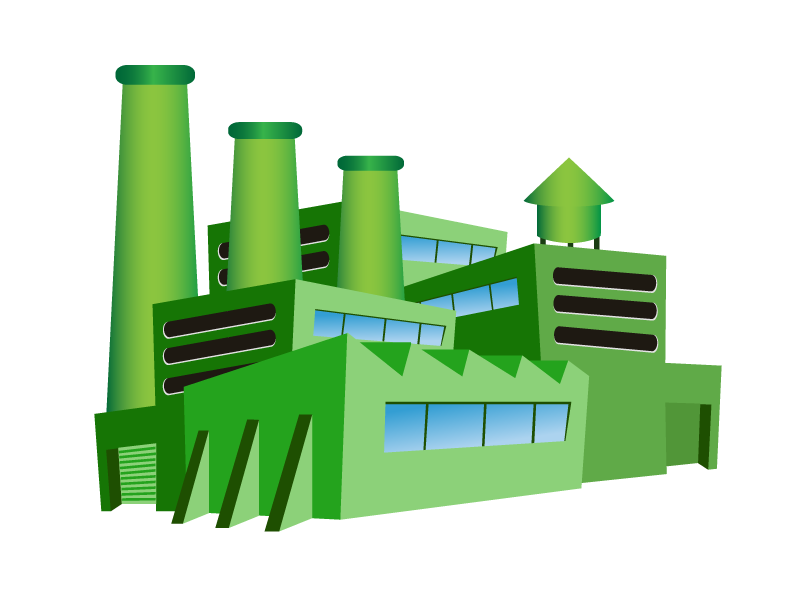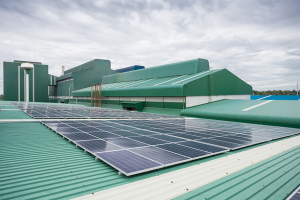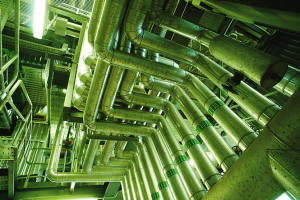Ways to save money while being environmentally responsible
 The promulgation of China’s revised Environmental Protection Law (EPL) on 1st January, 2015, led to the imposition of more stringent standards on industry. This has resulted in stronger pressure for manufacturers to reduce their overall waste. David Collins, Chief Operations Officer at China Manufacturing Consultants, looks at a number of different ways this can be achieved while simultaneously saving costs.
The promulgation of China’s revised Environmental Protection Law (EPL) on 1st January, 2015, led to the imposition of more stringent standards on industry. This has resulted in stronger pressure for manufacturers to reduce their overall waste. David Collins, Chief Operations Officer at China Manufacturing Consultants, looks at a number of different ways this can be achieved while simultaneously saving costs.
One goal of any factory should be to ensure that it sends no waste to landfill. Realising this concept takes a good deal of thought and coordination, but it has been achieved successfully in many places in the world. If you have a sound recycling strategy for copper, steel and other metals, you can actually sell this material and reinvest the cash made from the sale back into environmental improvement incentives for the business.
Recycling cardboard and similar materials is another great way to save or even make money for your company, and with 400 million tons of paper and cardboard being manufactured worldwide every year, any reduction in the amount sent to landfill will clearly have a significant impact on the environment. One of the best ways of achieving this is by switching to reusable containers from your suppliers. Instead of having your materials delivered in cardboard boxes, use a container that can be sent back to the supplier which they can fill again. This idea has been successfully implemented by many companies.
The automobile industry is a big user of this type of packaging. A Chinese company based in Guangdong that recently introduced reusable containers was able to pay back their investment in less than six months: a double whammy of helping the environment by reducing waste materials while saving the factory money.
When powder coating parts, many companies do not seal their powder coating area, which in itself is a hazard. If you consider that the transfer efficiency (i.e. the amount of paint that is released and deposited on the intended part) is only about 50 per cent, half the paint is being wasted. By using efficient application equipment and recovery methods a powder utilisation rate of 95 to 98 per cent can be realised.
When it comes to application of liquid paints, the paint that is left over in a spray booth can be dried and sold as fuel or, alternatively, sold to companies that produce pitch for roofing.
Working with electrostatic equipment or air-assisted airless, instead of traditional spray equipment, can save you as much as 50 to 70 per cent of your paint costs. Most conventional spray guns have somewhere between a 25 to 35 per cent transfer efficiency; good equipment and technique can get your factory in the 75 to 95 per cent range, saving a tremendous amount of money in paint as well as preventing unnecessary environmental damage.
 This approach can also be applied in the dyeing industry which has traditionally been a big polluter. Instead of letting the dye wash into the river, polluting the environment, it can be captured in a water treatment facility and sold just like paint waste can be.
This approach can also be applied in the dyeing industry which has traditionally been a big polluter. Instead of letting the dye wash into the river, polluting the environment, it can be captured in a water treatment facility and sold just like paint waste can be.
Excess heat produced from ovens or other factory processes can be used to heat offices or even be recycled back into the heating process itself. The amount of energy wasted from these processes is often very high: some factories can save as much of 20 per cent of their energy bill by simply recycling or reprocessing excess heat.
Due to poor facility engineering and planning, many machines are oversized, consequently using too much energy, which costs your factory money. By fitting your machinery with variable frequency drives (VFDs) you can save as much as 15 per cent of the energy expended on a machine by only providing the machine with the amount of energy it needs to do the work.
 Running a compressed air system is another very expensive process. Most factories have compressed air leaks springing out all over the factory – just listen and you can hear the air hissing. By fixing these leaks the air compressor works less, saving energy and of course money. The fact is, these leaks usually cost nothing to fix, just tightening the fittings will get rid of most of them.
Running a compressed air system is another very expensive process. Most factories have compressed air leaks springing out all over the factory – just listen and you can hear the air hissing. By fixing these leaks the air compressor works less, saving energy and of course money. The fact is, these leaks usually cost nothing to fix, just tightening the fittings will get rid of most of them.
Factories can even generate their own energy by using wind power, solar energy or even geothermal energy. Granted it may not cover all the needs of the facility, but it can go a long way to contributing to the energy requirements of the factory.
The last and most cost effective way to help the environment and save money in the factory is by managing quality. Rework and poor quality has a number of knock on effects: it uses additional energy, causes the factory to buy more parts, requires more manpower and any scrap generated often has to be put into landfill. Good process control, well-developed standard operating procedures and a well-trained workforce will save you much money and help the environment a great deal.
It is also important to note that there are many marketing advantages to this environmentally-friendly approach to production. As social responsibility becomes more and more important to your customers, your ability to say “we send nothing to land fill” or “we recycle all our chemical waste” will become a competitive advantage. It will also give the local government a favourable impression of your company. When taking all these factors into account, not only will you be saving money, you should also be able to attract new customers and operate in a more productive manner.
To sum up, keeping your factory environmentally friendly does not have to be thought of as just adding costs. You can implement many cost-saving measures that will help the environment. And while it is true that some clean air and clean water systems are expensive to implement, they do add to quality of life. This in itself creates a demand for goods and services that will help businesses to thrive.
David Collins is Chief Operations Officer at China Manufacturing Consultants (CMC). David has more than 30 years of manufacturing experience in the automotive, computer, aerospace, chemical and furniture industries. He was a senior manager of several General Motors and Chrysler car plants, as well a general manager and site director for Foxconn. He helped set up five factories from scratch in three different countries. David is a firm believer that good manufacturing practices improve performance on cost, quality, safety and environmental impact simultaneously. He may be contacted at david.collins@cmc-consultants.com.


Recent Comments